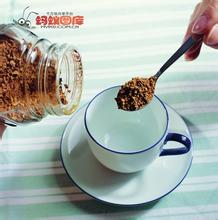Introduction to the characteristics of high-quality coffee beans in the producing area of Costa Rican Yerzaro coffee flavor varieties
Coffee was introduced to Costa Rica from Cuba in 1729, and today its coffee industry is one of the most well-organized in the world, producing up to 1700 kilograms per hectare. Costa Rica has a population of 3.5 million, but coffee trees number 400 million, and coffee exports account for 25% of the country's total exports. Costa Rica's volcanic soils are fertile and well drained, especially in the Central Plateau, where the soil consists of successive layers of ash and dust. Costa Rica was thus the first country in Central America to grow coffee and bananas for commercial value. Coffee and bananas are the country's main exports.
Located about 30 kilometers northeast of Costa Rica's capital San Jose, the research center is part of the Costa Rican Coffee Association, Costa Rica's national coffee breed.
The newly developed villa sarchi is a research institute for planting, breeding and quality inspection. In addition, it has 10 hectares of experimental fields planted with several excellent varieties. Coffee is Costa Rica's main agricultural product, with an annual output of more than 2 million bags (60 kg) and an export earnings of 250 million US dollars, second only to pineapples and bananas.
In Costa Rica, Arabica coffee trees are grown, improved, the quality of coffee beans is better and more stable; in order to facilitate picking, coffee trees are continuously pruned to maintain a height of about 2 meters; people eat coffee is the fruit of the seeds released by water brewing flavor. After picking the green coffee beans, the seeds (i.e. coffee beans) can only be roasted after removing the peel, pulp, seed membrane and sunlight exposure. Now some processes can be replaced by machines, which increases the speed of coffee production. However, there is no machine to pick coffee. Manual work must be used.
Costa Rican Coffee-Introduction
Costa Rican coffee is full of particles, with ideal acidity and unique aroma.
Costa Rica's coffee industry, formerly controlled by the Instituto del Café de Costa Rica (ICAFE), has been taken over by the Official Coffee Council (Oficin del Café). Among coffee exports, those deemed substandard are colored with blue vegetable dye before being recycled for domestic sale. Coffee consumed domestically (dyed blue or undyed) accounts for about 10% of total production, and local coffee consumption per capita is twice that of Italy or the United States.
Brazil, a coffee producer, accounts for one-third of global consumption of all grades and varieties of coffee and occupies a place in the global coffee market. Although Costa Rica faces many times more natural disasters than other regions, its arable area is enough to make up for it.
There are many kinds of coffee here, but its industrial policy is large and cheap, so there are not many excellent coffee, but it is a good choice for mixing other coffee.

Important Notice :
前街咖啡 FrontStreet Coffee has moved to new addredd:
FrontStreet Coffee Address: 315,Donghua East Road,GuangZhou
Tel:020 38364473
- Prev

Introduction to the characteristics of boutique coffee in Dominica Santo Domingo coffee production area
In December 1492, Christopher Columbus arrived on Hispaniola on his first voyage. On his second voyage there in 1493, Santo Domingo became the capital of the island. [3] thousands of Tainos were demoted to slavery and engaged in gold mining. Due to a series of oppression, hunger and disease, by 1535, the Tino had only 60,000 left. 1501, Spain
- Next

Introduction to the taste of high-quality coffee beans in the producing area of Mexican coffee flavor manor
Bordering the United States in the north and Guatemala in the southeast, Mexico is the third largest country in Latin America. The climate is complex and diverse, and the topography is dominated by plateaus and mountains. The average temperature in most parts of the plateau is 10-26 ℃, and the climate is relatively mild. The country started its coffee industry in the 19th century, and its output is the third largest in Latin America after Brazil and Colombia.
Related
- Detailed explanation of Jadeite planting Land in Panamanian Jadeite Manor introduction to the grading system of Jadeite competitive bidding, Red bid, Green bid and Rose Summer
- Story of Coffee planting in Brenka region of Costa Rica Stonehenge Manor anaerobic heavy honey treatment of flavor mouth
- What's on the barrel of Blue Mountain Coffee beans?
- Can American coffee also pull flowers? How to use hot American style to pull out a good-looking pattern?
- Can you make a cold extract with coffee beans? What is the right proportion for cold-extracted coffee formula?
- Indonesian PWN Gold Mandrine Coffee Origin Features Flavor How to Chong? Mandolin coffee is American.
- A brief introduction to the flavor characteristics of Brazilian yellow bourbon coffee beans
- What is the effect of different water quality on the flavor of cold-extracted coffee? What kind of water is best for brewing coffee?
- Why do you think of Rose Summer whenever you mention Panamanian coffee?
- Introduction to the characteristics of authentic blue mountain coffee bean producing areas? What is the CIB Coffee Authority in Jamaica?

